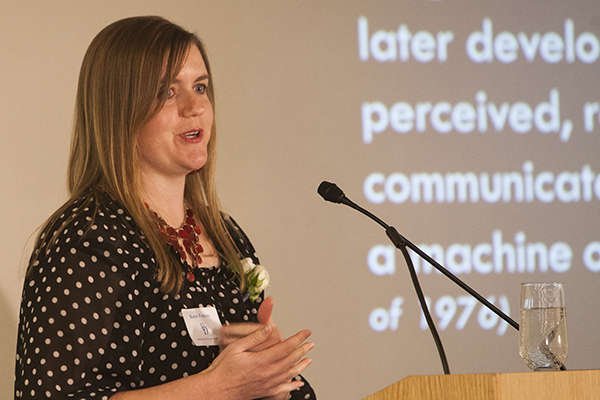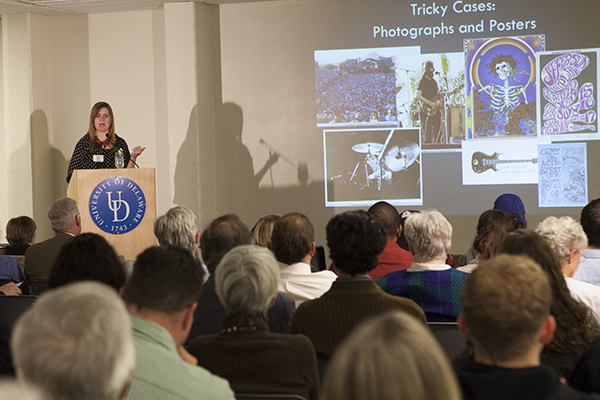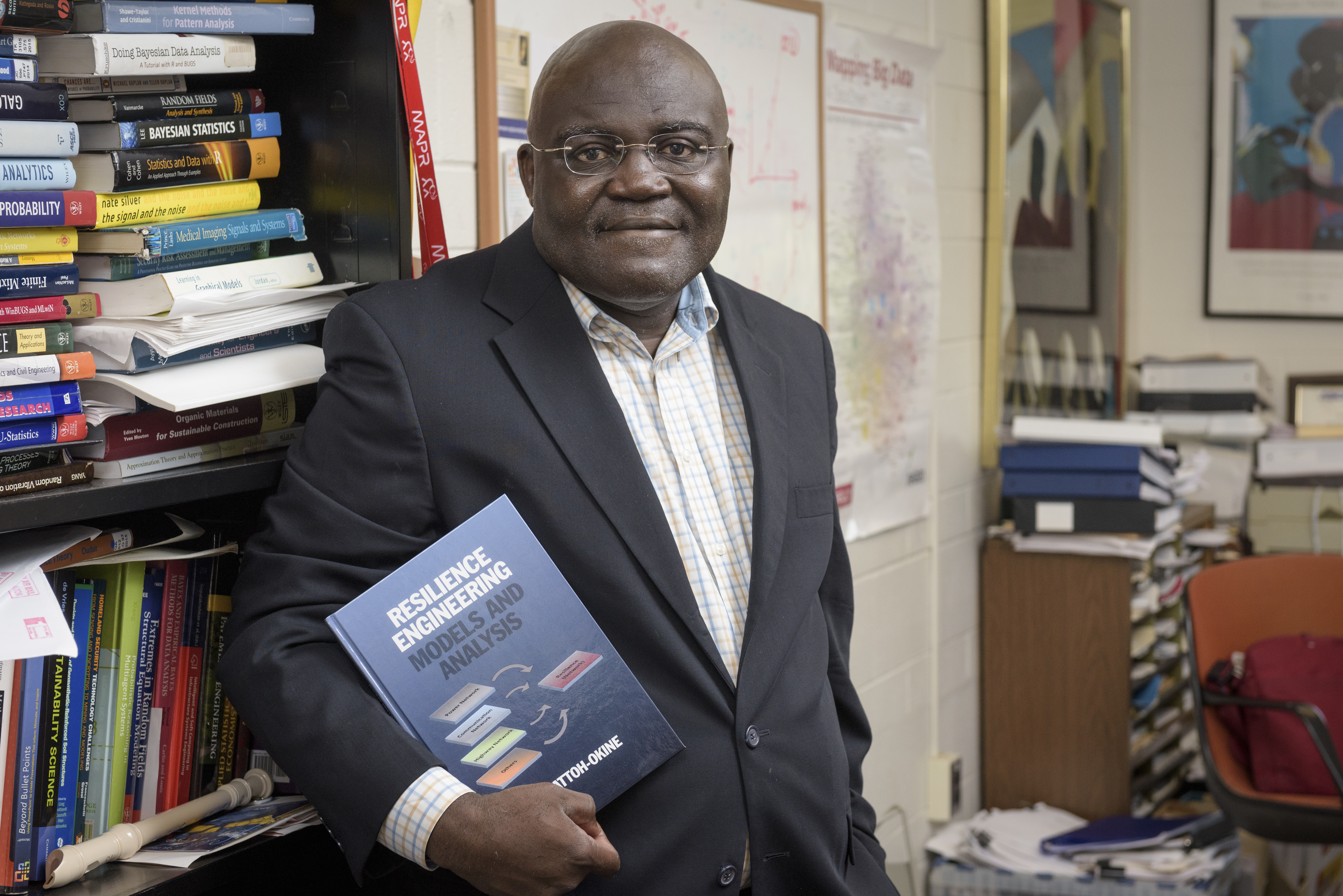


The Dead archives
University Library talk focuses on Grateful Dead online archive
3:51 p.m., Nov. 20, 2013--When the Grateful Dead rock band announced in 2008 that it was donating its considerable archives to the McHenry Library at the University of California, Santa Cruz, the gift made headlines and was a major acquisition for the library.
The story of how the considerable collection became available to digital users worldwide was the topic of a lecture Nov. 13 by Katie Fortney, copyright policy and education officer with the California Digital Library. Sponsored by the University of Delaware Library and the Perspectives on Digital Humanities Series, the program was presented in the Morris Library Reading Room.
People Stories
'Resilience Engineering'
Reviresco June run
Susan Brynteson, vice provost and May Morris University Librarian, welcomed more than 100 attendees at the event hosted by the Interdisciplinary Humanities Research Center, in partnership with the Library and IT Academic Technologies.
“The digital humanities are important to UD and the UD Library. We have been involved in the creation of them for many years,” Brynteson said. “The library has digitized a number of primary source materials located in Special Collections that form the basis for a number of digital humanities projects.”
The Dead go live online
During her presentation, “Copyright and the Digital Humanities: Archiving the Grateful Dead Online,” Fortney recalled acquiring the collection and how the more than 23,000 items were digitized for Internet access.
“The archives began years ago when the band hired Eileen Law to take care of fans and run the office,” Fortney said. “She started storing things in a closet, then it became a room, and eventually a warehouse.”
As the founding members were getting older with a building full of items, they looked for a place where their collection would be taken care of and they would not have to worry about it any more, Fortney said.
“So, they gave it to Santa Cruz,” she said. “This was a big story and got on the front page of the San Francisco Chronicle.”
In 2009, the library received an Institute for Museum and Library Services grant to digitize and build the archive online with selected items from the original 600 linear feet of materials donated by Grateful Dead Productions Inc.
“It was important to the band that the collection could be accessed by fans all over the world who could not come to Santa Cruz. The website is a good way to do that,” Fortney said. “Because the Grateful Dead is a concert-based band, we decided to do it by shows. When you click on a selected show, it creates a little mini-exhibit where you can look at pictures taken at that concert and see pictures of posters and T-shirts advertising the show.”
Fortney, who holds a graduate library degree from San Jose State University and a law degree from New York University, drew on her training and experiences as both a librarian and attorney to advise the production team on the copyright, trademark and privacy issues unique to the Grateful Dead collection.
“They said, ‘We have this stuff and we have this grant that says we are going to make this website.’ So I started to look around and figure out how were going to do this without getting sued,” she said. “This is important because almost everything in the collection is protected by copyright. Copyright law says that there is a list of provisions to protect the copyright holder, and you are supposed to seek permission.”
Fortney described working under the Fair Use provision of Section 107 of the Copyright Act that lists four factors to help determine fair use, including the purpose and character of the use and whether it is for commercial use or for nonprofit educational purposes.
Other factors under that statue include the nature of the copyright-protected work, the amount and sustainability of the portion used in relation to the copyright-protected work as a whole, and the effect of the use on the potential market value of the copyright-protected work.
“Fan envelopes are a huge bulk of the number of items on the site. There were often more people wanting tickets than there were tickets available, so people would try to increase their chances of getting someone’s attention by sending a special envelope,” Fortney said. “The people who made them never intended to make any money on them, they just wanted tickets and the creation of these envelopes was incidental to that purpose.”
Fortney noted that concert tickets, which form another large part of the collection, were originally purchased to get into the show and maybe later become souvenirs, and therefore did not involve making money or affecting potential market value.
“We are fairly confident about fair use concerning these items,” Fortney said. “We do have other items that we are not very comfortable with, including fan newsletters, which eventually became magazines. We decided that we were not going to put them up unless we got permission from the holders.”
Those items that presented more of a challenge regarding copyright protection and fair use compliance include posters and photographs taken at concerts, she said.
“We did get emails from 37 creators, and as a result, 15 items in the collection were taken down,” Fortney said. “We also got a lot of positive comment from others, including a graphic artist from Japan who was delighted that his stuff was still around as part of a larger thing.”
Fortney said that the library continues to evaluate additional items in the archives, with a nod to copyright and fair use practices while keeping the large Grateful Dead fan base happy.
“We are dealing with a community that is still very active, and we don’t want to make the wrong people mad and publicly come out against our project,” she said. “We really want users to like us — we want the stuff in their attics.”
Article by Jerry Rhodes
Photos by Ambre Alexander









